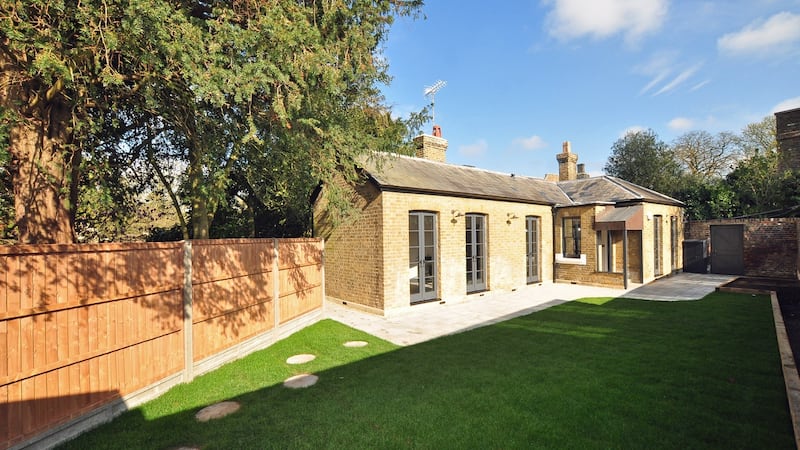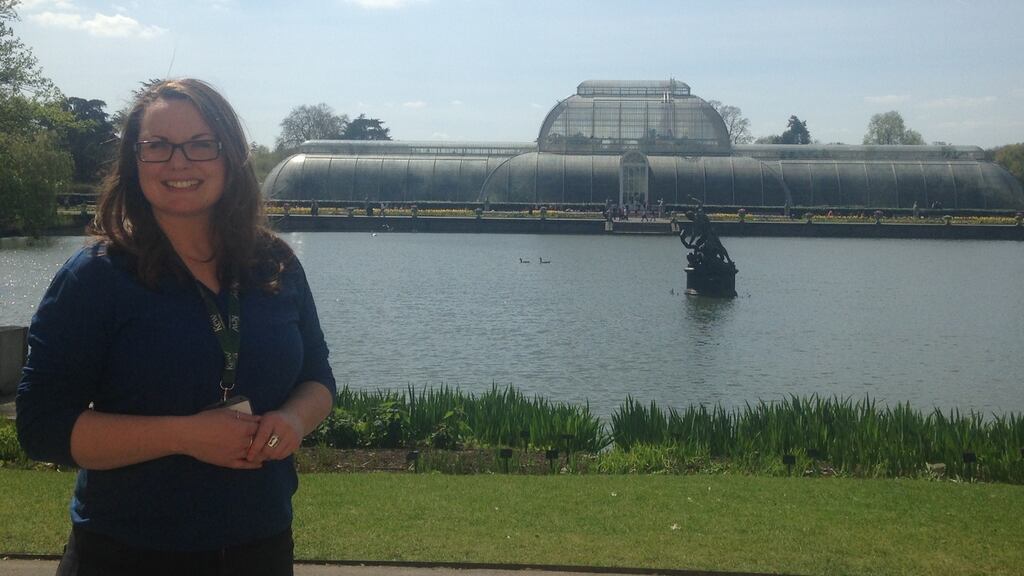A verdant jewel nestling in a bend of the river Thames in west London, the Royal Botanical Gardens at Kew, home to the world's largest collection of living plants, is widely regarded as one of the most valuable scientific assets on the planet.
The gardens are justly best-known for their botanical splendour, but for Dublin-born architect Niamh Kiernan, it is the estate’s 155 buildings – including myriad glasshouses, follies, ancient monuments, outhouses, and the Kew Palace where King George III was shut away during his infamous bouts of “madness” in the late 1700s – which hold the most intrigue.
Some of these structures also hold considerable revenue-raising potential for Kew, which has been savaged by cuts in recent years. Over the past decade, annual government funding for maintenance and capital works has been reduced from £10 million to £2 million. Many of the estate’s smaller buildings were closed as a result, so money could be redirected for maintenance of the essential laboratories, herbarium, library, archives and the Millennium seed bank.

But over the past year, as the estate has looked for ways to generate more sustainable revenue from its own assets and bring empty structures back into use, these smaller buildings have come back into focus. As part of its “Estates 2020” programme, Kiernan has been working with the in-house estates team to refurbish some smaller unused buildings, so they can be rented to the private sector.
Yellow-brick stables
The first to be renovated, an old yellow-brick stables dating from the 1850s which had been converted into a basic bungalow for Kew staff in the 1910s, had been lying empty on the edge of Kew Green for just four years, but it was in a bad state of disrepair.
“The kitchen was a lean-to with ivy growing through it, a lot of the plasterboard had come away, and the ceiling had fallen in. It was a ruin really,” she says.
It was not a listed building, but Historic England – the public body championing the country's heritage – and local councillors from Richmond were still invited to view the plans and give their feedback, to ensure the works met best conservation and sustainability principles.
As the stables had no historically important features, they could be gutted inside. Rotten sash windows were removed and replaced with modern frames, and some windowsills were dropped to become patio doors. A light repair job was done on the roof using as many of the existing slates as possible. Decayed timber joists were removed, new heating and plumbing installed, and the walls, roof and floors were insulated to a level suitable for human rather than horse habitation. The total works, which have just been completed, came in under budget at £265,000.
The building is now a cosy 92sq m family home, with a light-filled open-plan living space downstairs complete with a wood-burning stove and exposed original brickwork, light-oak wooden flooring, feature fireplaces in the three upstairs bedrooms, and Villeroy & Boch bathroom fittings. For a monthly rent of £3,200 (€4,037), it could be yours.
The £38,400 annual income from the unfurnished house will go towards scientific and horticultural work, as well as the upkeep of the estate. Kiernan says it is “a very conservative rent for Kew” as “the average rent in this part of London is staggeringly high”, and that other estate agents were looking to charge £4,500 per month.
“The directors were concerned to make it clear that we were not looking to make a profit on the development, so we selected a local estate agent who has experience working for charities and heritage sites just like Kew,” Kiernan says.
Kew is perhaps a difficult neighbour for potential tenants, however, with 1.5 million visitors marching through the gates each year.
“With concerts and weddings at weekends, there can be noise issues. So we are looking for a tenant who loves Kew enough that they are willing to put up with a bit of disturbance,” says Kiernan.
“But they will get free membership to the gardens so they can come and go as they please.” It is their back garden after all.
Botanical garden
The house is located on Kew Green, the area directly in front of the entrance gates to the park. Twenty houses on the green are already occupied, mostly by core members of Kew staff. These were initially built for advisers to the Royal Court during the reign of Henry VIII, and remained a hub of royal activity until the 19th century, when Kew became a botanical garden. Their back yards are surrounded by glass houses and rose gardens.
“I would absolutely love to live there,” Kiernan says. “It is one of the most intact Georgian greens in London, complete with cricket fields and pavilion and a lovely local church. Each morning, when I get off the train, cross the bridge and arrive at Kew Green, the pace slows significantly and it feels as though I have just stepped into a period drama set.”
Kiernan’s second residential project – a Tudorbethan gate lodge on the southern tip of Kew – has just gone on site, due for completion in June.
These first two residential projects are a pilot scheme “to show the government what could be achieved” with other larger buildings on the site, Kiernan says. Two more residential refurbishments will begin later in the year.
Landmark rentals
The concept is similar to a programme run by the Royal Parks in London, which rents out old houses and gate lodges on its lands for medium and short-term lets. In
Ireland
, the Irish Landmark Trust lets out 25 heritage properties for short stays, but they are owned by a charity rather than the State.
Having focused on the protection of heritage at risk in Ireland for her masters in conservation at the University of Bath, Kiernan speaks passionately about how her home country should be doing more to help protect its built heritage, despite limited resources.
“It is hard to justify spending money on heritage when housing, health, social welfare and education desperately need money, but the heritage of a country is supremely important,” she says.
“Many heritage assets are owned by developers who have lacked the means, and often the interest, to protect their property. This is despite various changes to the legislation designed to ensure protection for historic buildings.
“Political practices have played a part in the failure to protect the built heritage. Successive governments have been unwilling to relinquish the power they hold to dispense or even withhold funding, including funding from external sources. The failure to ensure that funding for heritage is put on a statutory basis has proven to be detrimental to the heritage sector.”
Projects like this one at Kew show how it could be done here in Ireland with a bit of investment and forward thinking.








